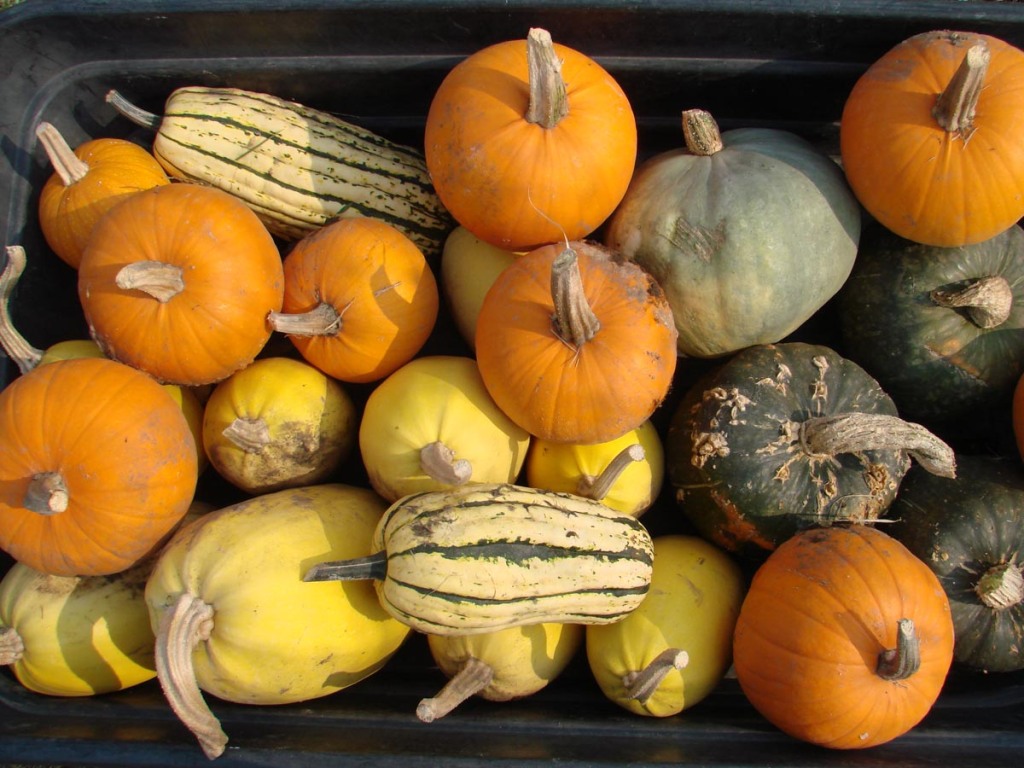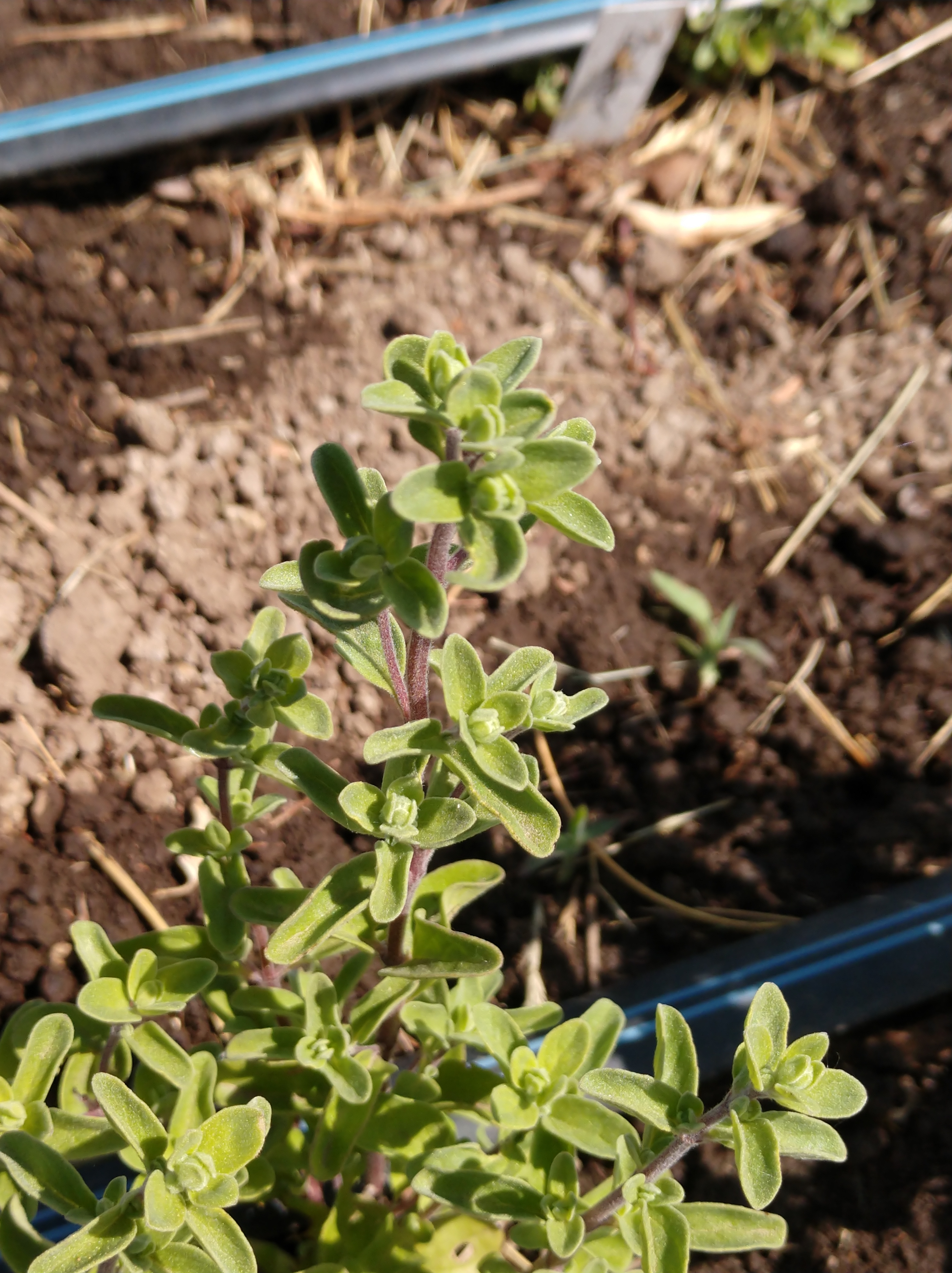You are currently browsing the category archive for the ‘Garden’ category.

Years ago, I was looking for some “definitive” information on how to grow potatoes. I consulted an old copy of Organic Gardening Magazine. In it, they had done a side by side comparison of a bunch of different potato growing techniques, including putting them in a bin and continually adding material as the potatoes grew. (You know the memes on this, where you open the bin at the end, and a gazillion potatoes fall out). Turned out, the highest yields came from simply planting the potatoes in the ground, so that’s what I’ve always done.
Read the rest of this entry »
When I first started gardening here in SE Washington, I was super excited to grow all kinds of winter squash. We moved from 7,000 ft gardening in Colorado, where winter squash had been VERY hard to grow. I couldn’t wait to grow delicata and spaghetti squash and Cinderella pumpkins and butternut. That first year, my squash did pretty well. And I saw this insect on one of my pie pumpkins and didn’t think much of it. I’m a live and let live girl, and so if I don’t see obvious damage, I don’t tend to destroy all insects.

One of the crazy results of a 2 year lockdown from the pandemic plus raising inflation is a huge increase in new gardeners in the last 3 years. Many many people are digging up their lawns, filling raised beds or simply planting into bags of compost, all in an effort to increase food security for themselves and their families and lower their food bills.
The result is that seed companies have been overwhelmed with orders, selling out popular varieties quickly. They have coped in various ways. Earlier release of seed catalogues, specific dates for new ordering, increased prices, higher shipping costs, limiting the number of packets of one variety anyone can order…
I’ve felt for these companies, used to going along in a routine yearly cycle, and then suddenly having orders increase dramatically right at the time when Covid lockdowns limited numbers of employees in warehouses, number of people available to work and all kinds of increase costs.
But the even uglier side of all of this increased interest? Terrible quality control.


For the record, I’ve been starting seeds for 20 years and have sold plant starts for the last 10. I have very strong systems in place to keep track of what is planted where.
Here are my examples:
Read the rest of this entry »This spring, as many new gardeners started plants from seed for the first time, I’ve noticed a trend in terms of failures. Someone on a group will post asking if they should replant, as its been 3 weeks and their seeds haven’t emerged, or their plants have been in a pot for over a month and still basically look like they did when they were a few days old.
If this happens to you, here are the components you need to review. Moisture. Temperature. Light. Soil.

Have you heard of Samin Nosrat’s wildly popular cookbook Salt, Acid, Fat, Heat? Those four words are a great checklist if you cook a meal and it tastes not quite right. You ask yourself, is there enough salt? Does it need a squirt of citrus or vinegar? Maybe a pat of butter? How about a few chili flakes?
Your version of this for seed starting is: Moisture, Temperature, Light, Soil.
Read the rest of this entry »
When I was new to starting seeds, I ran across advice on the importance of sterilizing both your seed starting mix and the containers into which it went, in order to kill off any pathogens that might be in your mix. This, ostensibly, was to prevent the dreaded damping off. Damping off causes young seedling to rot right at the soil line. The plant simply falls over at the weak point in the stem and dies. Once the plant is infected, there is nothing you can do to save them.
Read the rest of this entry »It’s been a minute since I’ve added to my deep dive into garden plant families. If you look back through the posts, you’ll find we’ve already covered the mints, the brassicas, the nightshades, the alliums and the parsley family (the series is listed under “gardening” on the DIY Homesteading tab above).
It’s time to talk about one of my hands down favorite plant families, Fabaceae, also known collectively as the legumes, aka beans, peas and their kin. If you’ve been reading my blog for any length of time, you know I have a deep love affair with most dried beans. One that isn’t showing any signs of abating since my early childhood bowls of ham hock and beans and my love of refried beans at a Mexican restaurant (truly, its how I benchmark the restaurant – if you can’t get this simple staple right, everything else falls short).
Read the rest of this entry »
I keep a seed inventory spreadsheet that goes back to 2003. On that 2003 list? Waltham 29 Broccoli. Broccoli and I go back a long time. It was one of the first vegetables I learned to love. I even ate it back in high school, when the list of vegetables I would eat was very short. I preferred it smothered in packaged cheese sauce back then. We mostly eat it in a stir fry now, but I’ve also made broccoli soup a time or two, and it often just shows up as a sauteed veggie side with whatever dinner we’re having. It’s a kitchen workhorse, and I freeze some of my crop every year.
Every year I start broccoli in my greenhouse, and ever year I have a few extra seedlings to sell. And every year most of them languish and don’t end up in a garden. I never understood this, until this year when I joined several online beginning gardening groups. I’ve come to realize that a lot of people have a hard time growing broccoli. They try it once, have a bad experience, and so never grow it again. So I thought I’d write up a few tips.
Read the rest of this entry »Subtitle: So you want to build a greenhouse. Here’s what you need to know.
I built my first greenhouse in the mid 2000’s when we were living outside Durango Colorado. It was a DIY design based on using a wood frame, PVC pipe for the arches, and plastic sheeting to cover. It probably cost me less than $200 with new materials. I had wanted a greenhouse for almost 20 years at that point, but could not afford to buy a kit. When we got it up, it was early spring in Durango, an area that is almost 7,000 feet in elevation, and has a last frost date in early June! I had tomato seedlings started in my sunny laundry room, and was SO excited to now have a greenhouse I could transfer them to.
I lovingly put them all into the sunny warm greenhouse. The next morning, everything had frozen solid and all of my seedlings were very very dead.
Read the rest of this entry »In July 2019, I wrote a blog post titled “Myths of the Gardening World“. In my head, I titled it “Gardening Myths I wish would die”, lol. And almost as soon as it was done, I thought of a few more that I had missed. These are myths I used to believe myself, until I did more research. So here, for your December dreaming of spring enjoyment, are a few additional gardening myths that need to be debunked.
Read the rest of this entry »
